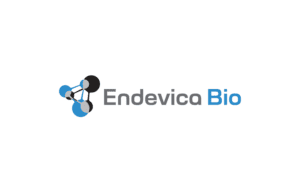 Endevica Bio (formerly TCI Peptide Therapeutics) started in 2009, focusing on peptides that affect the melanocortin system, which mammals use to regulate food intake and energy homeostasis.
Endevica Bio (formerly TCI Peptide Therapeutics) started in 2009, focusing on peptides that affect the melanocortin system, which mammals use to regulate food intake and energy homeostasis.
The company’s core focus is on a drug candidate known as TCMCB07, a potential treatment for cachexia in cancer patients. Cachexia, a wasting disorder that can result in significant weight loss, is common in patients with advanced cancers, AIDS and kidney failure.
Endevica Bio anticipates that clinical trials for TCMCB07 will begin in the fourth quarter of 2021.
To learn more about the company and its TCMCB07 candidate, we spoke with its founder and CEO, Dr. Kenneth Gruber. In the following interview, Gruber provides an overview of cachexia and the potential to reverse the condition and explains why a dog model of disease can be considerably more useful than a rodent model.
Drug Discovery & Development: What have drug companies done to date to treat cachexia?
 Gruber: There have been many attempts and failures to develop drugs to reverse cachexia. Cachexia is a complex disease with devastating impacts on patient wellbeing and outcomes. Doctors treating patients with cachexia use a variety of appetite stimulants, nutraceuticals, nutrition plans, etc., to try to reverse cachexia, but the available strategies are not enough — our therapeutic tackles the basis of cachexia; elevated metabolism. Cachexia is equivalent to running a car engine above the red line; eventually, it fails. A high metabolic rate produces the breakdown of lean body mass, which includes skeletal muscle and all organ systems. Essentially, a cachectic individual is “eating” (i.e., destroying) all their organ systems. Our treatment doesn’t merely mitigate the loss of skeletal muscle mass, hiding the problem. It reverses the overall effects of cachexia.
Gruber: There have been many attempts and failures to develop drugs to reverse cachexia. Cachexia is a complex disease with devastating impacts on patient wellbeing and outcomes. Doctors treating patients with cachexia use a variety of appetite stimulants, nutraceuticals, nutrition plans, etc., to try to reverse cachexia, but the available strategies are not enough — our therapeutic tackles the basis of cachexia; elevated metabolism. Cachexia is equivalent to running a car engine above the red line; eventually, it fails. A high metabolic rate produces the breakdown of lean body mass, which includes skeletal muscle and all organ systems. Essentially, a cachectic individual is “eating” (i.e., destroying) all their organ systems. Our treatment doesn’t merely mitigate the loss of skeletal muscle mass, hiding the problem. It reverses the overall effects of cachexia.
Cachexia is common to many diseases where there is enhanced activity of the immune system. An article in The American Journal of Clinical Nutrition estimates 30% of people with cancer have cachexia. Additional disease prevalence includes AIDS (35%), COPD (20%), kidney failure (40%), rheumatoid arthritis (10%), and heart failure (20%).
The medically accepted cachexia diagnosis is a 5% loss of body weight over 12 months, without any specific attempt to reduce body weight. The implicit assumption that most of the weight loss is lean body mass leads to underdiagnosis. A problem with the diagnosis of cachexia that is relatively unique to the U.S. is that the loss of skeletal muscle mass (the most obvious form of lean body mass) can be hidden by obesity until cachexia is in an advanced state. In contrast, in the Netherlands, their low rate of obesity allows cachexia (and its effects on muscle mass) to be diagnosed by the simple loss of body weight. A recent solution to this problem in the U.S involves the use of medical imaging of skeletal muscle volume. This appears to be an effective way to measure the presence of cachexia by the loss of skeletal muscle volume, irrespective of body weight.
Drug Discovery & Development: How did cachexia emerge as a focus area for the company?
Gruber: I became interested in developing melanocortin drugs when I worked on the cardiovascular effects of melanocortins in the 1980s. I subsequently left academia to join the National Institutes of Health, where I was chief of the Chronic Diseases Branch. Eventually, I went back to academia, and during a sabbatical in Dr. Roger Cone’s research laboratory at Oregon Health Sciences University (OHSU), my interest in melanocortin drugs was rekindled. Cachexia was one of the diseases of the melanocortin system under investigation at OHSU, and that led me to form a company to produce melanocortin drugs.
Drug Discovery & Development: How does your peptide for cachexia compare to other proposed drugs for this condition?
Gruber: It is well accepted that a major cause of cachexia is increased activity of the brain melanocortin system. Thus melanocortin system antagonist drugs were shown to reverse many forms of cachexia. However, much of the brain melanocortin system is in areas behind the blood-brain barrier, making clinical use of melanocortin drugs problematic since this can be a formidable obstacle. For example, the proof of the anticachexia effectiveness of melanocortin antagonists was from their direct brain injections in rats. While effective, this was not a medically useful approach. Thus, one of our early drug development milestones was to produce a technological approach that would allow melanocortin drugs to cross the blood-brain barrier. We accomplished this goal and produced a general approach that could be used in the design of other drugs that need to cross this barrier to have therapeutic actions.
The initiating factor in elevating brain melanocortin system activity is increased circulating (in blood) pro-inflammatory cytokines (a product of an activated immune system). As their name suggests, these cytokines contribute to the production of inflammatory effects. Cytokines act on the brain in several ways; to directly increase brain melanocortin activity and to increase brain cytokine production, which, in turn, can also act on the melanocortin system. Published data suggest that brain inflammation produces activation of the melanocortin system, and we have direct evidence that B07 reduces pro-inflammatory cytokine gene expression in the brain, data published recently in JCI by researchers Zhu and Marks. We don’t yet know if B07’s anticachexia activity is tightly linked to its effects on pro-inflammatory genes. However, this is a testable hypothesis, and we’re producing B07 analogs to examine this very question.
Drug Discovery & Development: Could you briefly summarize the milestones your company has achieved to date?
Gruber: Our achievement of milestones began with creating our intellectual property that involves making structural changes to peptides to increase their ability to cross the blood-brain barrier, extend the drug half-life, and mitigate potential side effects. From there, we were supported by almost $5 million in grants from the National Cancer Institute to develop TCMCB07, characterizing it and testing it for safety and efficacy in multiple models, including a veterinary clinical trial in dogs, which showed promising results. We successfully manufactured TCMCB07 in large lots using a scalable and cost-effective process for future large-scale production when the drug goes to market. We have put together a formidable team that includes a prominent researcher in the cachexia field, high-quality regulatory and strategic consultants, and people with project management and commercialization experience. We have also successfully acquired multiple rounds of investment funding, with the last round advancing us through Phase 1 clinical trials. Our IND enabling toxicology program had begun for TCMCB07 with an IND anticipated at the end of the year.
Drug Discovery & Development: As for the veterinary trial, I wondered if you could share more about how focusing on treating animals could provide funding for human trials and, ultimately, FDA approval?
Gruber: A deep dark secret in clinical drug development is that the use of rodents for efficacy studies has the pitfall of a 70–90% failure rate in translation to human efficacy in Phase 2 clinical trials. That’s why so many drugs fail in clinical trials, and drug development is so expensive.
Homo sapiens of 30,000 years ago were genetically different from us. They were hunter-gatherers and were not physiologically adapted to a high amount of plant-based food in their diet. Dogs were part of the hunter-gatherer society, and when we evolved (e.g., to farming and eating grains), so did they. Modern dogs are not carnivores but are omnivores like humans. However, that transition has produced many known and unknown disease proclivities, such that dogs are often a better animal model for human diseases than even non-human primates. The translation of drug development efficacy in humans using a dog model of disease has an 85–90% success rate, at least 3x that of rodents.
The National Cancer Institute recognized the difference between rodent and canine translational efficacy many years ago and developed the Comparative Oncology Trials Consortium (COTC). This group of North American veterinary schools performs drug trials for cancer in client-owned dogs at their veterinary hospitals across the U.S. and Canada. However, the problem with the COTC is that it is expensive to use this NCI-funded core facility. Major pharmaceutical companies are its main customers.
Endevica, with the assistance of the University of Missouri College of Veterinary Medicine, set up an independent canine cachexia trial group at veterinary hospitals across the U.S. to test the efficacy of B07. The FDA’s Center for Veterinary Medicine assisted us in our canine cachexia trial protocol. This, along with the safety studies with B07 that we performed in collaboration with the Oncology Division of the University of Missouri, convinced veterinary hospitals to collaborate with us in performing a trial of the efficacy of B07 in client-owned dogs with cachexia. In this study, B07 was responsible for statistically significant increased body weight (p ≤ 0.03) and improvement in thin dog condition scale (p ≤ 0.01). There were no significant drug-related adverse events, and some dogs continued on the drug for expanded use for up to approximately 360 days. The success of B07 in this canine trial significantly reduced the risk of a developmental failure in human clinical trials, which is a highly attractive feature for investors.
Filed Under: clinical trials, Drug Discovery, Drug Discovery and Development, Oncology



